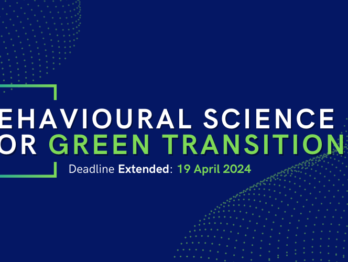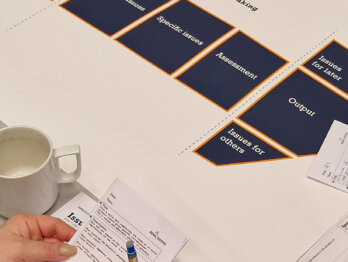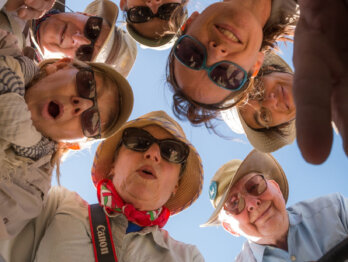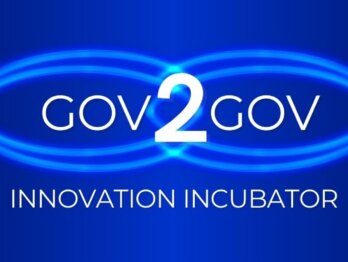Dispatches from the 2020 Mission Oriented Innovation Bootcamp

This article is jointly published on the UCL IIPP blog.
As part of an ongoing partnership between the UCL Institute for Innovation and Public Purpose (IIPP) and the OECD’s Observatory of Public Sector Innovation (OPSI), we hosted an online immersive workshop on 2 December 2020 to explore the challenges and opportunities of directing mission-oriented innovation in practice.
The event brought together leaders from across a range of government institutions in OECD countries and from the IIPP MOIN network. Over 150 civil servants, economists, business leaders and policymakers from 36 countries took part, including: Brazil, Malaysia, Czech Republic, Thailand, Italy, South Africa, Canada, Spain, Denmark, Estonia, Austria, Australia, Latvia, Greece, Hungary, Belgium, Netherlands, Ireland, Bangladesh, France, Norway, Chile, Portugal, Paraguay, Turkey, Sweden, Slovenia, Vietnam, Malta, Finland, Poland, Korea, United Arab Emirates, USA, Japan and UK.
The goal of the day was to provide an immersive masterclass in the concept of mission-oriented innovation with Professor Mariana Mazzucato, followed by insights from OECD OPSI’s research stream and a practitioner forum with government agencies from MOIN who are leading missions. This was followed by deep dive breakout groups to discuss the opportunities and challenges of working with mission oriented policy.
Immersion in the concept of mission-oriented innovation
Professor Mariana Mazzucato, IIPP’s Founding Director, opened the workshop with a presentation that spoke to her work advising policy makers around the world on innovation-led inclusive and sustainable growth. Many participants at the event had taken their lead from two influential reports she has authored, firstly on Mission-Oriented Research & Innovation in the European Union, which turned “missions” into a policy instrument in the European Commission’s Horizon innovation programme, and her second report, “Governing Missions”, which focuses on implementing missions in three key themes: engaging citizens, public sector capabilities and financing.
At the Missions Bootcamp, Professor Mazzucato stressed the importance of understanding the challenges in adopting a mission-oriented approach to innovation as it encourages government to take on a market-shaping role rather than a market-fixing one, and acts to direct the market by transforming the focus of investment towards societal ‘grand challenges’. In setting long-term, politically resilient ‘missions’ that are concrete, time-bound, ambitious, bottom-up and cross-sectoral, these missions can define new pathways for investment.
In her presentation she warned that it is no longer enough for government to fix market failures: policy-makers need to be more future focused, creating and shaping new markets to meet the challenges that now face us — from climate change to ageing populations. Rather than the traditional industrial policy focus on sectors, mission-oriented policy focuses on problem-specific societal challenges, which many different sectors interact to solve. This drives the focus onto problems, and new types of collaborations between public and private actors to solve them, creating the potential for greater spillovers than a sectoral approach. Her presentation was followed by a lively Q&A — drawing in insights from participants from Bangladesh to Brazil.
Building the tools for missions
Societal challenges (climate change, ageing populations, global pandemics, etc) will have real impacts on our societies, and they require profound changes in how we think about innovation. Moving from an era of relative certainty which sought concrete solutions to simpler challenges, to one that embraces the complexity and uncertainty ahead requires transformations that will not happen without scientific progress and technological and social innovations. Put simply: we need new tools to face the future.
After Mariana’s energetic opener, the focus of the Bootcamp shifted to practice. The next speaker was Philippe Larrue of the Directorate for Science, Technology and Innovation, who leads research into Design and Implementation of Mission Oriented Innovation Policy (MOIP) at the OECD. Philippe remarked that with the impetus of the European Commission’s next research and development framework programme, “Horizon Europe” (2021–27), there has been rapid growth in the adoption of mission-oriented policies and many states — including Germany and the Netherlands — are now moving in this direction by introducing integrated and co-ordinated mechanisms with ambitious goals in mind. From his research, he described missions as “coordinated packages of research and innovation policy measures aiming to address societal challenges” and outlined the following characteristics seen in different approaches around the OECD countries:
- Missions span several stages of the innovation cycle from research to demonstration and market launch
- They use various instruments (supply-side and demand-side; top-down and bottom-up).
- They are targeted towards ambitious and concrete goals in a defined time-frame.
- They cross various policy fields and are often inter-ministerial and cross-agency.
From his research he noted that about 40 to 50 global initiatives that he is researching match an “ideal-type” definition, and he shared insights into what he is observing in emergent practice:
- Missions tend not to be set at the outset — they are more commonly a sequential process of mission definition, with gradual narrowing down of directions.
- MOIPs often still rely on traditional evaluation tools and methods which may not be fit for purpose
- Governance redesign is an important part of adopting missions. To work with multi-level (‘nested’) and cross-ministerial / cross- agency governance structure is new practice and needs development.
- There is work to be done to understand the best internal distribution of power and structure of leadership for missions.
- The relative novelty of a growing number of pilot experiments can mean that mission-oriented programmes face challenges in scaling-up.
Drawing on lessons-learned from pilots and early practice, the OECD has been developing a platform to provide policy makers with both analytical knowledge and practical information on the design, governance and implementation of MOIP initiatives. This beta-phase explorable guide helps policy makers understand how to design and implement mission-oriented innovation policies.
Missions in Action!
With the Bootcamp we also wanted to give a flavour of what it is like to lead missions in practice, so with the help of four members of IIPP’s Mission Oriented Innovation Network (MOIN), the next phase of the Bootcamp was a practice forum led by four practitioners from Sweden, Holland, Spain and the UK.
Sweden
We started with Dan Hill, Director of Strategic Design at Vinnova in Sweden.
Vinnova is the Swedish Government’s national innovation agency, responsible for coordinating Sweden’s innovation ecosystems, which takes the form of funding research and innovation projects across the country, and working in collaboration with other national agencies, regional governments, municipal governments, and the private and third sector, as well as with international partners. Dan described how he worked with multiple collaborators, across the Swedish public, private and third sector, to co-design and develop two missions — one focused on healthy clean streets and one focused on reshaping the food system. He shared the following tips for what worked for him in the management of missions:
- Be overt — be explicitly directional in the mission-led approach
- Build participation from stage minus one
- Understand that place-based innovation unlocks systems
- Identify and redeploy existing embedded value
- Deploy technology in context of people and place
- Where possible integrate private, public and third sectors
- Deploy prototypes to help people understand the mission and promote discourse
- Foster continuous stewardship and engagement
- Use a platform strategy to scale
- The Innovation agency can be ‘the cement between the bricks’
Spain
Following Dan, we moved to Jordi Garcia Brustenga, from ENISA, the National Innovation Agency of Spain.
Jordi gave an overview of the process of mission setting in the domain of mobility and shared his challenges — working across agencies to coordinate the complementary pieces of the “missions puzzle”; finding good impact metrics; aligning agendas with other ministries; and navigating the different parts of the system, ensuring that this work does not run up against bureaucracy and “old” administrative instruments.
Health Holland
Following Jordi, the focus shifted to health. Tackling societal challenges in the public health arena has never been so prescient, so it was great to hear from Kirsten van Spronsen & Hanna Groen, from Health Holland, the Netherlands’ health innovation agency.

Hanna and Kirsten took us through the development process for the “Health for all” mission in Holland which states:
“By 2040, all Dutch citizens will live at least five years longer in good health, while the health inequalities between the lowest and highest socioeconomic groups will have decreased by 30%.”
They described a participatory and experimental process that has led to the co-design of a range of health missions in the domains of dementia, chronic conditions, lifestyles and social care, describing how this grew from a quadruple helix approach involving many agencies and communities to becoming a movement that has the commitment and momentum to solve the big health challenges of our time.
EngineeringX at the UK
And last of our practitioners, we welcomed Shaarad Sharma who leads Engineering X at the Royal Academy of Engineering, an international collaboration that brings together a network of expert engineers, academics and business leaders from around the world in partnership to deliver impact through mission oriented innovation policy. He described missions in the domains of Pandemic Preparedness, Safer Complex Systems, Safer End of Engineered Life.
Adopting missions has been a journey for EngineeringX and is a profoundly experimental and networked process. Shaarad shared the following learnings:
- MOIP is very helpful in navigating uncertainty and encouraging exploration (but can be uncomfortable)
- Don’t nail down on a programme or solution too early — invest in your own understanding and capability
- Be inclusive in the community that you build — listen to underrepresented voices and leverage networks of networks
- Don’t duplicate, collaborate!
The key takeaways from the Bootcamp
In today’s Zoom-fatigued world, it can be hard to stay online for three hours, but the energy and commitment to this event was palpable and we were delighted to see so many participants with us right to the end. After a round of breakout discussions, our key takeaways were:
- Missions are here to stay as they express deep-rooted needs to change existing policy-making frameworks (“innovation policy makers don’t actually innovate”)
- Mission practice is very diverse even in a relatively uniform context of the EU. And this is a good thing as we need more experimental and iterative approaches to governance and to missions
- Context matters!
- There is urgent need to learn from emerging practices and to develop peer-learning communities of mission practice — MOIN and the OPSI platform are here to help!
- It is vital to understand that missions are not easy, they need new tools, new approaches and new capabilities to deliver.
- We should not only just focus on the granular practice-based insights (on reasons why missions fail), but also on the creative endeavour of building the tools we need that are fit for the future
And Finally…
We concluded the event with the commitment to reconvene in the new year to co-design tools for the future. Missions ask of public institutions to go against the established economic logic of market fixing to focus on value creation and this is why we need policy design and experimentation to define new ways of doing things.
We look forward to deepening our partnership with the OECD OPSI and learning from their growing dataset about mission-oriented innovation. By jointly sharing this convening, we can broaden the impact and bring insights to policy-makers from a range of angles, while providing the safe space to learn about emergent practices.
At IIPP, this is the core goal for the Mission-Oriented Innovation Network (MOIN), a peer-learning network of over 70 leading global policy-making institutions co-funded by the Rockefeller Foundation and the Hewlett Foundation. MOIN supports, enables and learns from practice — through what we call “practice-based theorising”. This is where we work with policymakers to co-design, test and experiment with new theories and approaches and provide the space to share the challenges and opportunities in trying to create and nurture public value. If you would like to join the network or simply find out more about MOIN membership please email Nora Clinton at [email protected]
More ways to engage with this work:
- Watch the Bootcamp on YouTube replay
- Learn more about the OECD OPSI work on missions and UCL IIPP work on mission-oriented innovation.
- Let us know if you would like to join the invite list for workshop #2 — there will be a joint webinar on the 26th January 2021 for those who missed the first bootcamp (register here) and a second workshop focussed on operationalising missions in February 2021. Please express interest by email to [email protected] and outline your name, role and institution by January 20th 2021.
Happy new year!












